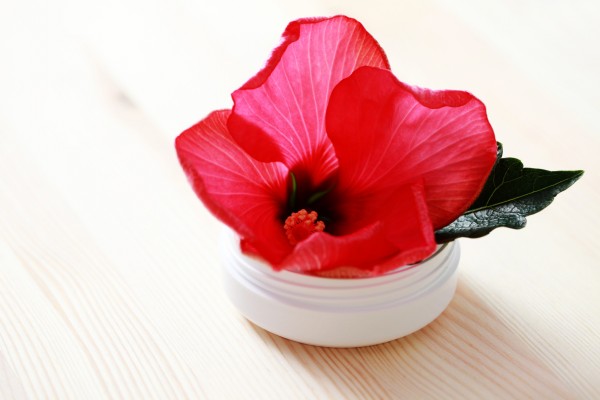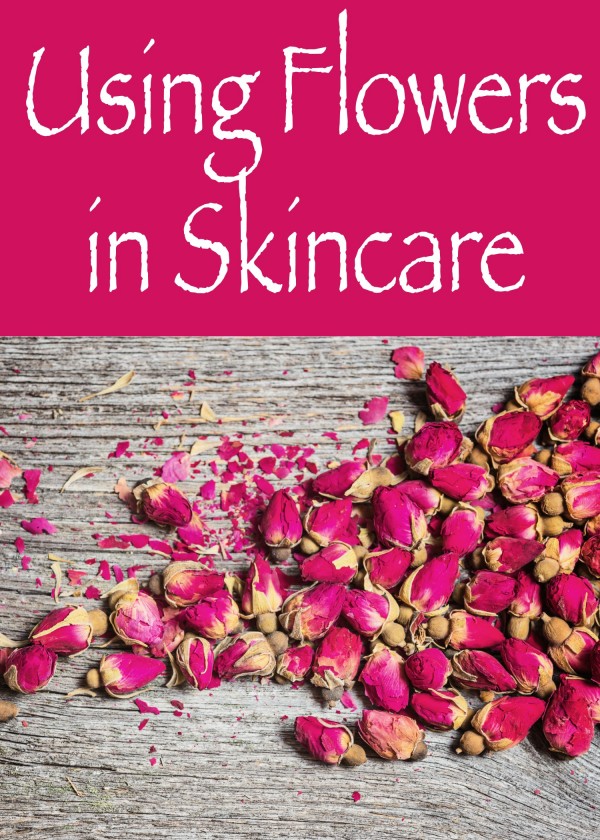I am excited to have Maurine Anderson with us today sharing this great post on Using Flowers in Skincare. My skin is struggling right now so I am going to to try some of her suggestions!!
Using Flowers in Skincare by Maurine Anderson
If you’re a lover of fresh florals, then you’ll probably be delighted to hear that flowers can very much be at the center of your skincare routine. Incorporating flowers into your skincare is a great way to keep your beauty regimen natural while still reaping a myriad of benefits from the floral ingredients you choose for your skin. Here are some great and easy ways to bring flowers into your skincare routine.
As a skincare ingredient
Of course, one easy way to incorporate flowers in your skincare routine is to look for them as ingredients in natural skincare products. Here are some of the most common examples of flowers you might find in skincare products, and how each one can benefit your skin.
Chamomile
Chamomile is a particularly healing skincare ingredient, as it is antibacterial, anti-fungal, anti-inflammatory and antiseptic. It also happens to be hypoallergenic and can neutralize skin irritants, making it perfect for sensitive or acne-prone skin. It can even help reduce redness, promoting a healthy-looking, natural glow as it calms and heals your skin.

Hibiscus
Hibiscus is a natural and gentle source of AHA’s, which help increase collagen production, speed up skin cell turnover, and slough away rough and dead skin. It also contains vitamin C, which is good for anti-aging, fading dark spots, toning, and reducing fine lines and wrinkles. This article has more information on how Hibiscus can benefit your skin.
Jasmine
In addition to hydrating and softening the skin, Jasmine has a special ability to declog pores. Jasmine wax as an ingredient in body lotions and creams also has a warming effect and increases circulation.
Lavender
If your skin is oily in some places and dry in others, lavender might be just the skincare ingredient you need to balance things out. Lavender, which is relatively mild, can normalize dry, sensitive, and oily skin types by balancing out sebum production.
Rose
Rose is particularly good for mature skin because it is extremely hydrating and can heal broken blood vessels at the skin’s surface. It also happens to be rich in vitamin C but isn’t as harsh as citrus-derived sources of vitamin C.
For steam facials
For a more hands-on approach, you can try adding dried flowers or floral essential oils to a pot of boiling water, letting it steep for ten minutes, transferring the concoction to a large bowl, and then holding your face over the pot to enjoy the benefits of the steam. (Drape a cloth over your head to create a “steam tent” and maximize the effects of your steam.) Steam your face for about five minutes to open up your pores, remove impurities, and take in the delicate floral scent of your steam. Here are a few floral mixtures you might consider using for your own at-home steam facials.
Chamomile + Lavender
This is a great option for sensitive skin because these two flowers have natural calming properties. It can also help restore balance to oily skin because of the Lavender it contains. You can even simply turn to this floral mixture when you’re looking to relax.
Chamomile + Dandelion + Rose
This is a great mixture for dry or irritated skin because the Chamomile is naturally healing, the Dandelion helps re-establish balance, and the Rose helps the skin retain moisture.
Calendula + Rose
This special mixture features two flowers that are both known to offer anti aging benefits.
In your morning tea
Don’t forget that you can (and should) improve the look of your skin from the inside out as well. Drinking tea is a great way to reap the benefits that flowers have in store for your skin, all the while giving your skin the hydration it so desperately needs. Some of the most popular flowers that make their way into drinkable teas include Calendula, Chamomile, Dandelion, Jasmine, Lavender, and Rose.
Calendula (or Marigold) tea increases collagen production in the body, contributing to a more youthful appearance.
Chamomile tea has anti-inflammatory and antiseptic properties in addition to its inherent calming qualities, helping to clear up skin irritations such as eczema, acne, and allergies. It is also rich in antioxidants, which help fight the free radicals in the body that damage skin cells.
Dandelion tea contains powerful antioxidants and immune enhancing properties, which both help your skin stay young and healthy.
Jasmine tea can help battle the effects of aging, as well as fight skin conditions like eczema. It’s also great for those with oily skin because it helps reduce oil production, fight acne, and balance hormones.
Lavender tea is most popularly known for its calming properties, but for the skin, it can help reduce stress lines in the face and reduce the likelihood of developing skin infections. Many like to apply brewed lavender tea topically to the skin.
Rose tea (and rosehip tea, which uses the round portion of the rose flower just below the petals,) is actually very rich in vitamin C, which means that as you drink it, you can enjoy increased collagen production and more resilience against premature skin aging.






